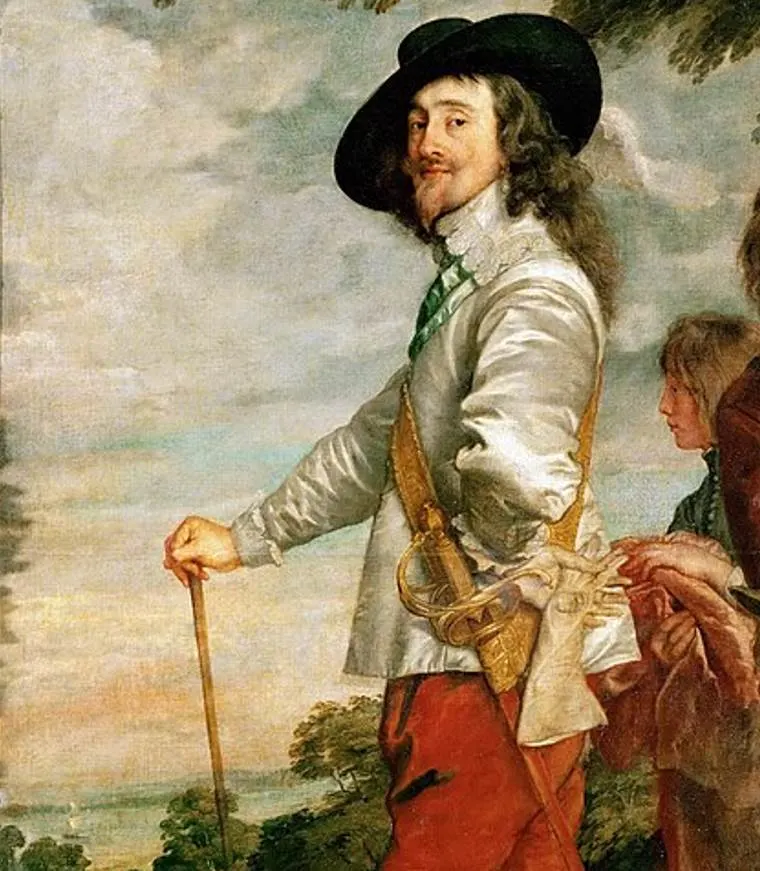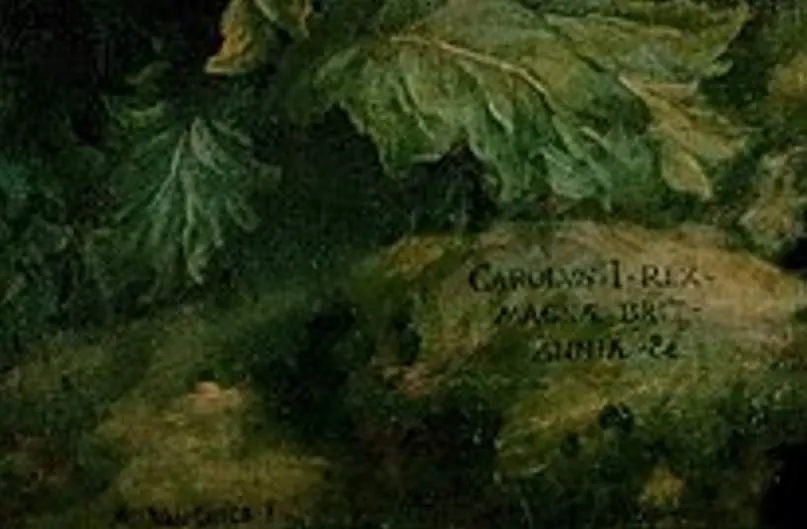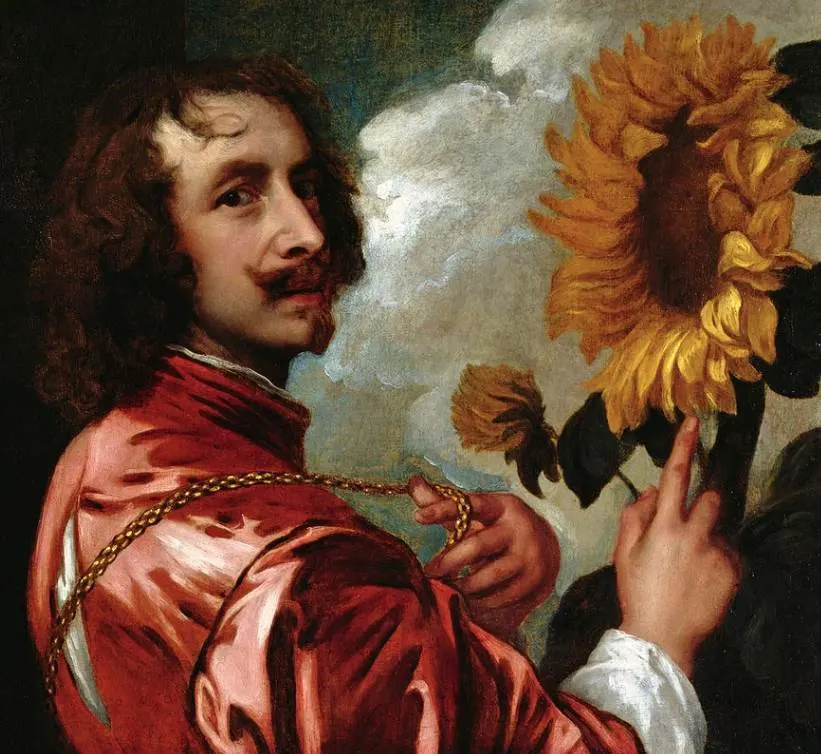One of the greatest Flemish artists in history was knighted by the man he portrayed frequently, King Charles I of England (1600-1649).
One of the most remarkable portraits depicts the king rather casually, something that elevates this Baroque painting to a completely different level.
Let’s take a closer look at some of the most interesting facts about Charles I at the Hunt by Anthony van Dyck, one of the ultimate masterpieces of the renowned artist of the Baroque era.
1. It was completed while van Dyck was the English court painter
Anthony van Dyck (1599-1641) was born in Antwerp, a city in modern-day Belgium that belonged to the Spanish Netherlands at the time. It was also the home city of his contemporary, Peter Paul Rubens (1577-1640), a man who produced an incredible number of masterpieces.
Their life story converges on several points, including the fact that both men spent time in Italy and that they were both knighted by King Charles I of England, a notable patron of the arts in the first half of the 17th century.
Anthony van Dyck became the English court painter in 1632, a title referred to back then as the “principalle Paynter in ordinary to their Majesties.” He completed Charles I at the Hunt 3 years later in 1635

2. It depicts the king of England during his favorite passtime
As the name of the painting suggests, we can see the king of England enjoying one of his hobbies, hunting. He stands in front of his horse and is accompanied by two servants.
The artists portrayed the King and his wife Queen Henrietta Maria (1609-1669), on numerous occasions and developed a naturalistic style during his stay in England. This is emphasized by the casual appearance and demeanor of the king in this painting.
Despite his natural look and the ordinary civilian clothes that the king is wearing, he still displayed a sense of authority as he leans on a walking stick.
3. It’s possible we can see England’s largest island in the background

The king was brightly painted and the viewer’s eyes are therefore directed to him. This is emphasized by the fact that the horse and two servants were depicted in the shadow of the tree they stand under.
What’s remarkable is that we can see the sea in the background. This means that this scene might take place near the Solent, a strait between the Isle of Wight and the southern coast of England.
If this is true, it means that we can see the Isle of Wight in the distance as well, a real possibility because the Solent is only between 4 and 8 kilometers (2.5 and 5 miles) wide.

4. The composition hides a remarkable characteristic of the king’s appearance
King Charles I was an extremely short man, presumably with a height that didn’t even reach 1.5 meters (5 feet). To make things worse for court painters, he was also very sensitive about his height.
Van Dyck always managed to perfectly camouflage this shortcoming in the king’s appearance. In Charles I at the hunt he elevated the king’s position so he appears to be taller than he was.
The viewer is also looking up towards the king which further strengthens this effect, a clever trick by one of the greatest portraitists in history.
5. Van Dyck added a political statement to a rock in the bottom right corner
It’s hard to notice at first glance but van Dyck added a small note to one of the rocks in the bottom right corner of the painting. This isn’t the artist’s signature but a political statement that he made on behalf of the king.
The inscription reads:
Carolus.I.REX Magnae Britanniae (Charles I, King of Great Britain)
The context in which this painting was produced makes this a rather sensitive statement. King James I, the father of Charles, only United the crowns of England and Scotland 32 years before this painting was completed in 1603.
The Kingdom of Great Britain wasn’t established until 72 years later in 1707, the year that the Acts of Union were signed which formed Great Britain as we know it today.

6. The artist was only paid half of what he originally requested
As the court painter of England, Anthony van Dyck received a salary of £200 a year. With inflation in mind, this was the equivalent of less than £50,000 a year, not exactly a royal salary for such a talented individual.
This was compensated by the fact that he also received payments for the paintings that he completed. King Charles I wasn’t the most generous person on the planet and never paid a pound more on the yearly salary, and often paid much less than the artist requested for his paintings.
Perhaps he thought that offering knighthood would compensate for his lack of generosity? We’ll never know.
For Charles I at the Hunt, van Dyck was paid £100 instead of the £200 that he requested before the artist started the work.

7. How big is Charles I at the Hunt by Anthony van Dyck?
The size of the painting shouldn’t have been a reason for the king to pay only half of the amount that was agreed upon because it’s a relatively large work of art.
This oil on canvas painting has dimensions of 266 x 207 centimeters (104.72 x 81.49 inches).
8. Where is the painting located today?
One of the most remarkable facts about Charles I at the Hunt by Anthony van Dyck is it wasn’t mentioned in the king’s inventory after he was executed in 1649. We don’t know what happened to it in the following decades.
We do know that it was in France in the year 1738 and that it was sold to King Louis XVI (1754-1793) by Madame du Barry (1743-1793) in 1775.
The irony about this is that both the king and Madame du Barry suffered the same faith as King Charles I of England as both were decapitated during the French Revolution.
Today, this masterpiece of the Flemish artist is part of the collection of the Louvre Museum in Paris.

